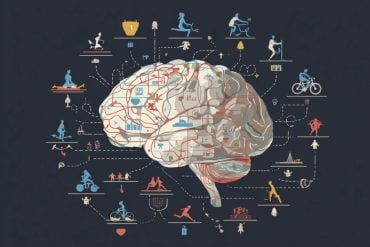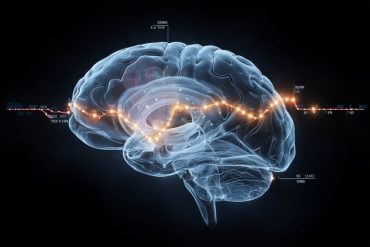Summary: By three months, babies are already enlisting the hippocampus to help recognize and learn patterns, researchers report.
Source: Yale
One trait shared by all humans is that they don’t remember specific life episodes that occurred before the age of 3 or 4. Many scientists have attributed this so-called “infantile amnesia” to a lack of development in the hippocampus, an area of the brain located in the temporal lobe that is crucial to encoding memory.
However, a new brain imaging study by Yale scientists shows that infants as young as three months are already enlisting the hippocampus to recognize and learn patterns.
The findings were published May 21 in the journal Current Biology.
“A fundamental mystery about human nature is that we remember almost nothing from birth through early childhood, yet we learn so much critical information during that time — our first language, how to walk, objects and foods, and social bonds,” said Nick Turk-Browne, a professor of psychology at Yale and senior author of the paper.
For the new study, the Yale team used a new functional magnetic resonance imaging (fMRI) technology to capture activity in the hippocampus in 17 babies, aged three months to two years old, as they were presented two sets of images on a screen.
One set of images appeared as a structured sequence containing hidden patterns that could be learned. In the other, images appeared in a random order that offered no opportunity for learning. After the babies were shown these two sets of images several times, the hippocampus responded more strongly to the structured image set than to the random image set.
What might be happening, Turk-Browne said, is that as a baby gains experience in the world, their brain searches for general patterns that help them understand and predict the surrounding environment. This happens even though the brain is not equipped to permanently store each individual experience about a specific moment in space and time – the hallmark of episodic memory that is also lost in adult amnesia.

The strategy makes sense because learning general knowledge — such as patterns of sounds that make up the words in a language — may be more important to a baby than remembering specific details, such as a single incident in which a particular word was uttered.
The size of the hippocampus doubles in the first two years of life and eventually develops connections necessary to store episodic memories, Turk-Browne said.
“As these circuit changes occur, we eventually obtain the ability to store memories,” he said. “But our research shows that even if we can’t remember infant experiences later on in life, they are being recorded nevertheless in a way that allows us to learn from them.”
Yale’s Cameron Ellis is first author of the study, and this research was included in his recently completed and award-winning PhD dissertation.
About this neurodevelopment research news
Source: Yale
Contact: Bess Connolly – Yale
Image: The image is in the public domain
Original Research: Open access.
“Evidence of hippocampal learning in human infants” by Nicholas B. Turk-Browne et al. Current Biology
Abstract
Evidence of hippocampal learning in human infants
Highlights
- •Hippocampus supports statistical learning of temporal regularities in infancy
- •Changes in hippocampal activity emerge after only minutes of exposure
- •Localization of learning effects within hippocampal system similar to adults
- •Exploratory analyses suggest a selective role for medial prefrontal cortex
Summary
The hippocampus is essential for human memory. The protracted maturation of memory capacities from infancy through early childhood is thus often attributed to hippocampal immaturity.The hippocampus of human infants has been characterized in terms of anatomy, but its function has never been tested directly because of technical challenges.
Here, we use recently developed methods for task-based fMRI in awake human infants to test the hypothesis that the infant hippocampus supports statistical learning.
Hippocampal activity increased with exposure to visual sequences of objects when the temporal order contained regularities to be learned, compared to when the order was random.
Despite the hippocampus doubling in anatomical volume across infancy, learning-related functional activity bore no relationship to age. This suggests that the hippocampus is recruited for statistical learning at the youngest ages in our sample, around 3 months.
Within the hippocampus, statistical learning was clearer in anterior than posterior divisions. This is consistent with the theory that statistical learning occurs in the monosynaptic pathway, which is more strongly represented in the anterior hippocampus.
The monosynaptic pathway develops earlier than the trisynaptic pathway, which is linked to episodic memory, raising the possibility that the infant hippocampus participates in statistical learning before it forms durable memories. Beyond the hippocampus, the medial prefrontal cortex showed statistical learning, consistent with its role in adult memory integration and generalization.
These results suggest that the hippocampus supports the vital ability of infants to extract the structure of their environment through experience.







